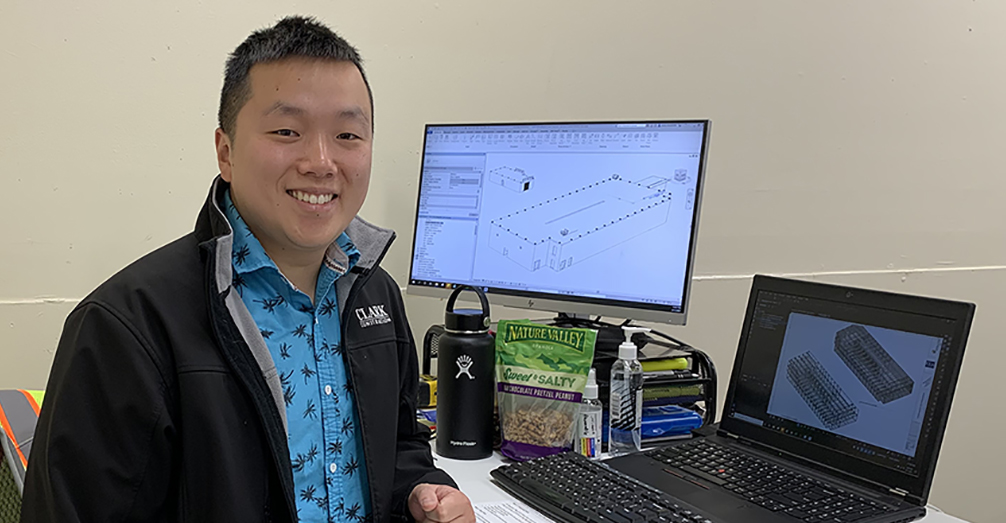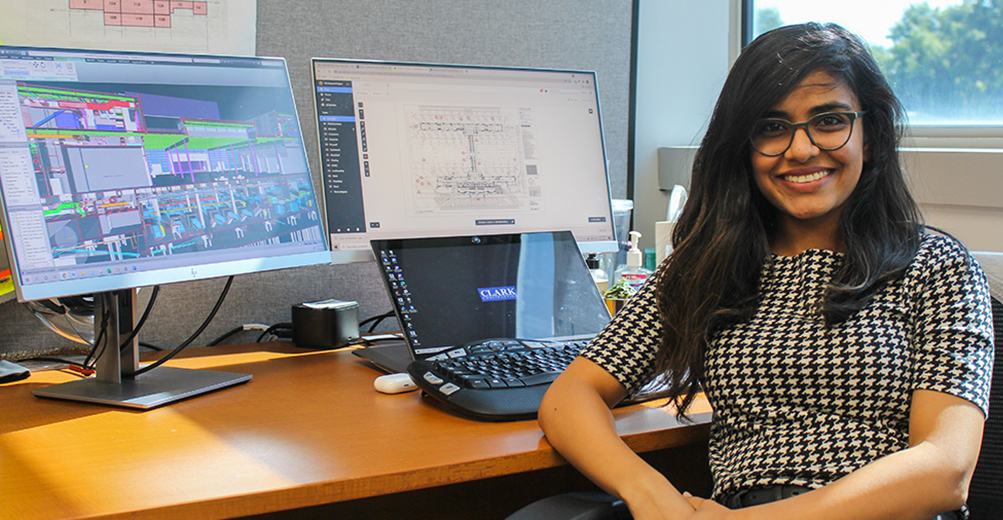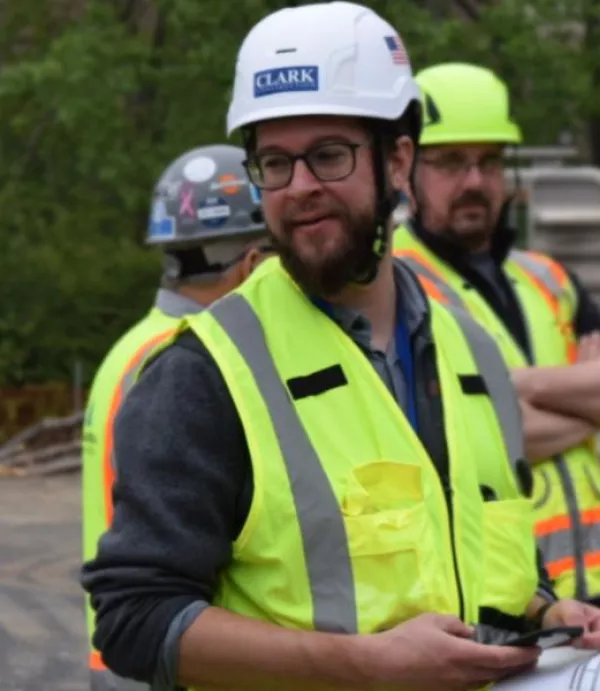VDC Kickstart Program Prepares Engineers for the Industry's Future
July 15, 2021

Clark’s Virtual Design and Construction (VDC) Kickstart program is part of a broader effort to leverage digital building information modeling (BIM) to provide project stakeholders certainty through analysis and automation. During a three-month training rotation, engineers participating in Kickstart learn the skills necessary to deploy BIM to advance project development efforts on their current and future projects.
The program, which began in 2018, boasts more than 50 graduates, all of whom have returned to their projects with a keen understanding of both the technology and the process required for the successful implementation of BIM.
Two recent Kickstart graduates, Komal Patel, a project manager on the New Single Terminal at Kansas City International Airport (KCI), and Brian Chen, a project engineer in Southern California, share what they learned in the program and how they are leveraging that knowledge.
Why did you want to participate in the VDC Kickstart program?
Komal: BIM is a contract requirement throughout my project’s lifecycle, starting with conceptual design, through construction, and now into closeout. Additionally, I oversee MEP trades and knew that BIM would be helpful with coordination and clash detection.
Brian: I want to be part of the construction industry’s future as it becomes more digital. The technologies I learned provide me with a better understanding of how to build a structure twice – first digitally and then again in real life.

Kickstart participants learn to build digital models that represent concepts such as scheduling, budgeting, and constructability. Which models did you find most interesting?
KP: I enjoyed quantity takeoff models. While I was in the program, my team used a software called Assemble to assign values to structural elements on my project. We tracked major budget items by developing a dashboard that showed the quantities of elements like pile, concrete columns and beams, elevated deck, glazing, and pre-cast.
BC: I found schedule-loaded models most interesting. It is amazing how effectively this tool is in uncovering inefficiencies in the schedule and rearranging logistics before reaching that phase of construction.
How have you implemented what you learned in the program on your project?
BC: I helped my team use Revit to analyze the sections, elevations, plans, and details of a unique architectural stair, one of the building’s centerpieces. We identified more than ten opportunities to resolve constructability issues.
KP: We coordinated the clash detection process in-house on the KCI project. We addressed nearly 7,000 issues prior to fabricating any material. The in-house coordination process for a one-million-square-foot project with complex MEP, firefighting, and baggage handling systems was complicated, but because it was done right it saved time and effort in the long run.

How does the VDC Kickstart program provide value to our clients?
KP: At KCI, we created a video walkthrough of the roadway construction schedule to illustrate the scope of work to key stakeholders and potential bidders. The video saved a lot of time because it produced an active technical conversation without hours spent reviewing drawings. The project team also used the presentation to brief city council on our approach to the roadway work.
BC: Having a trained BIM/VDC employee on a project helps teams identify constructability issues earlier, which saves time and money. More efficient methods of constructing critical path items can be built into the schedule and budget earlier in the process. BIM software also helps ensure quality by tackling potential design flaws and promote safety by coordinating site logistics.


